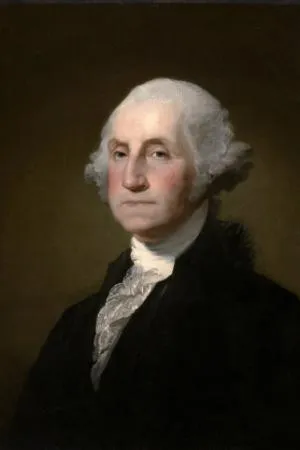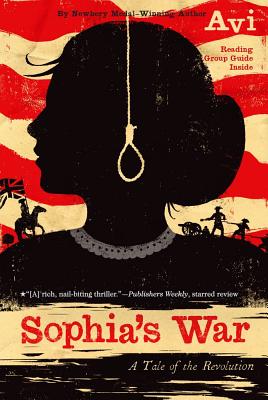Articles
Exploring History's Greatest Adventures throughout time!


George Washington: A President of Precedents
"Gentlemen, you will permit me to put on my spectacles, for, I have grown not only gray, but almost blind in the service of my country.” - George Washington
1st President: April 30, 1789 – March 4, 1797
A Man with Two Birthdays
President's Day falls in February because it honors two great men who were born in that month, George Washington and Abraham Lincoln. In fact, both of George Washington's birth dates are in February! (Both?) Well... George was born only once, but you might find different dates in different sources and get a little confused.
Here's why:
Washington was born on February 11, 1731. At that time, Britain still used the Julian calendar, which was around since the time of Julius Ceasar. Then, in 1752, Britain and its colonies, including America, officially adopted the Gregorian calendar. That pushed his date of birth forward a whole year and eleven days to February 22, 1732.
Today, we must use February 22 as Washington's birthday because his death date of December 14, 1799 is also based on the Gregorian calendar.
You can read more about how, when, and why the calendar changed here.
America’s First Presidential Election
George Washington’s qualifications for the presidency were impressive. He had served as the Commander-in-Chief of the Continental Army during the Revolutionary War, leading the colonies to victory against the British. His military experience and leadership skills earned him widespread respect and admiration.
To win the presidency, Washington didn't have to campaign in the same way modern candidates do. In 1789, the electoral process was different. Instead of candidates running on a ticket with a vice-presidential nominee, each elector (that’s a person chosen to represent their state in the election process) had two votes to cast for president. The candidate who received the most votes became president, while the runner-up became vice president.
In this election, Washington won unanimously, receiving all of the electoral votes. John Adams came in second, becoming the first vice president of the United States. The 12th Amendment to the Constitution modified the election process in 1804, and established separate ballots for the presidency and vice presidency.
The Role of the First President
Being the first president was a monumental task. Washington had to establish precedents and set the course for the new nation. He had to lay the foundations for the federal government, build the country's financial system and create a national bank. And he couldn’t let the idea of a self-governing nation without a monarch fail. Other countries were watching him very closely. Talk about pressure!
George Washington was widely respected and admired by the American people. His leadership, integrity, and dedication to the nation earned him the nickname "Father of His Country." Despite facing criticism and challenges, he remained a unifying figure who commanded respect and admiration from all sides.
Problem Solving and Legacy
As president, Washington tackled numerous problems that tested the authority of the federal government, including the Whiskey Rebellion. The new government needed money to pay off debts from the Revolutionary War. So they decided to tax whiskey, which was a popular drink made by farmers. The farmers thought it wasn't fair because they worked hard to make the whiskey, and now they had to pay extra money for it. Many refused to pay the tax and caused some trouble. President Washington had to send in the army to make sure everyone followed the rules.
Washington also played a crucial role in establishing the Bill of Rights, ensuring individual freedoms and protections for the citizens.
His legacy extends far beyond his time in office. He set a precedent for peaceful transitions of power and established the principles of democracy and republican government. His leadership and vision helped shape the United States into the nation it is today.
Serving from New York and Philadelphia (and Mount Vernon)
During George Washington's years as president, the capital of the United States was located in two different cities: New York City and Philadelphia. Initially, New York City served as the capital from 1789 to 1790. Then, from 1790 to 1800, Philadelphia became the capital. It wasn't until 1800 that the capital was permanently relocated to Washington, D.C., where it remains today.
In 1793, yellow fever hit Philadelphia. A lot of people got sick, and some even died. This was a really tough time for the people living there, including the president, Alexander Hamilton, Thomas Jefferson and all the other politicians in the city.
The sickness spread fast, so those who could leave the city did. George and Martha Washington went to Mount Vernon, where the president stayed until December when it was reported that the epidemic was over.
Life After the Presidency
After leaving office in 1797, Washington retired to his estate at Mount Vernon, where he focused on farming and enjoyed spending time with his family. Tragically, he passed away on December 14, 1799, but his legacy lives on as one of the most influential figures in American history.
George Washington's contributions to the United States are immeasurable. As the first president, he set a standard of leadership and integrity that continues to inspire generations of Americans. Whether you’re celebrating President’s Day or simply seeing his portrait on a dollar bill, remember the remarkable journey of George Washington, a true founding father of our nation.
Fun Facts and Busted Myths:
1. George Washington's Wooden Teeth: Contrary to popular belief, George Washington did not have wooden teeth. His dentures were made of materials like ivory, gold, and human teeth, and they were quite uncomfortable for him to wear.
2. Washington's Tall Tales: George Washington was often portrayed as an exceptionally tall figure, but he was actually about 6 feet 2 inches tall, which was above average for his time but not extraordinarily tall.
3. The Cherry Tree Myth: Legend has it that as a young boy, George Washington chopped down his father's cherry tree and, when confronted, admitted to it by saying, "I cannot tell a lie." After Washington died in 1799, the nation was hungry for stories about their hero. Washington's biographer, Mason Locke Weems, was the first to mention the story and probably made it up to illustrate his honesty and integrity. There are no other historical documents that mention it.
4. Washington's Philadelphia Stays: During his presidency, George Washington lived in Philadelphia, then the capital of the United States. He resided in two different houses: the first one at 190 High Street (now 524-30 Market Street) and the second at 524-30 Market Street (now demolished).
5. Washington's Love for Horses: George Washington was an avid equestrian and loved riding horses. He was an excellent horseman and often rode his favorite horse, Nelson, during battles and leisurely rides.
6. Washington's Farewell Address: In his farewell address, George Washington warned against political factions and foreign entanglements. This speech, delivered in 1796, is considered one of the most important political addresses in American history and is still studied today.
Recommended Reading
Fever 1793 by Laurie Halse Anderson (Ages 10 – 14)

It's late summer 1793, and the streets of Philadelphia are abuzz with mosquitoes and rumors of fever. Down near the docks, many have taken ill, and the fatalities are mounting. Now they include Polly, the serving girl at the Cook Coffeehouse. But fourteen-year-old Mattie Cook doesn't get a moment to mourn the passing of her childhood playmate. New customers have overrun her family's coffee shop, located far from the mosquito-infested river, and Mattie's concerns of fever are all but overshadowed by dreams of growing her family's small business into a thriving enterprise. But when the fever begins to strike closer to home, Mattie's struggle to build a new life must give way to a new fight-the fight to stay alive.
My Brother Sam Is Dead by James Lincoln Collier (Ages 10 – 13)

All his life, Tim Meeker has looked up to his brother Sam. Sam's smart and brave -- and is now a part of the American Revolution. Not everyone in town wants to be a part of the rebellion. Most are supporters of the British -- including Tim and Sam's father.War is raging and Tim knows he'll have to make a choice -- between the Revolutionaries and the Redcoats . . . and between his brother and his father.
Sophia's War: A Tale of the Revolution by Avi (Ages 10 – 13)

In 1776, young Sophia Calderwood witnesses the execution of Nathan Hale in New York City, which is newly occupied by the British army. Sophia is horrified by the event and resolves to do all she can to help the American cause. Recruited as a spy, she becomes a maid in the home of General Clinton, the supreme commander of the British forces in America. Through her work she becomes aware that someone in the American army might be switching sides, and she uncovers a plot that will grievously damage the Americans if it succeeds. But the identity of the would-be traitor is so shocking that no one believes her, and so Sophia decides to stop the treacherous plot herself, at great personal peril: She’s young, she’s a girl, and she’s running out of time. And if she fails, she’s facing an execution of her own.
George Washington Word Search Puzzle
Download and print this free word search puzzle to accompany this article.
© 2023. Historic Books for Kids - All Rights Reserved
Reading Pennsylvania, USA
